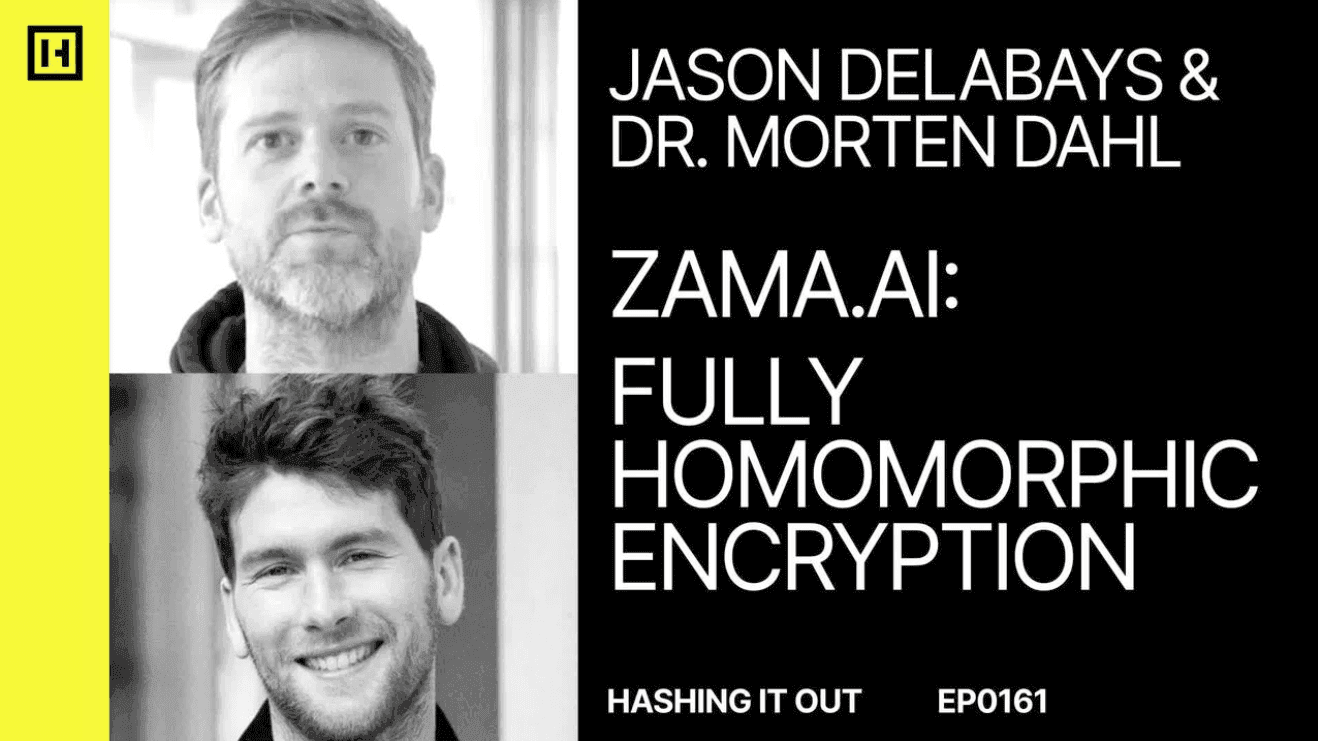

Zama.ai | Fully Homomorphic Encryption
Dee, Corey, and Jessie host an insightful interview with Jason Delabay and Dr. Morten Dahl from Zama, focusing on fully homomorphic encryption.
Delabay, with a background in web development and crypto, delves into his journey into cryptography after meeting Zama's CEO, exploring the potential of FHE in blockchain technology. Dr. Dahl, with expertise in secure computation, discusses the application of his cryptography background at Zama.
The team elaborates on Zama's mission to make FHE easily accessible and scalable for developers, highlighting the difference between FHE and other cryptographic techniques like zero-knowledge proofs. They also discuss the challenges and future prospects of integrating FHE into blockchain, aiming to enhance privacy without compromising on trust and security.
Demetrick Ferguson
Hey everybody, welcome to another amazing interview. Another amazing hashing it out interview real hashing it out interview. Today we are joined with the team from Zama Kazimiye. And we're mostly going to be talking about fully homomorphic encryption, but we're going to go into those things. Today we're joined with Jason Delahaye and Mr. Morton.
Jason Delabays
Hello, everyone.
Demetrick Ferguson
Welcome.
Episode hosts - Demetrick Fergurson, Corey Petty, Jessie Santiago
Produced by - Christian Noguera
Edited by - Joe Siebert